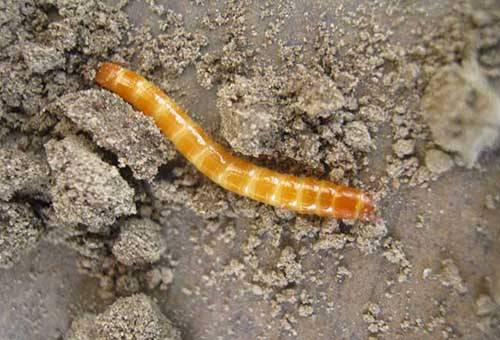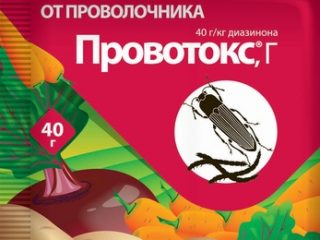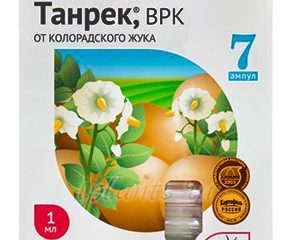Content
Gardeners have two serious enemies that can nullify all efforts to grow crops. One of them specializes in tops, the second in roots. Both pests are beetles. And the second is much more dangerous than the first: the Colorado potato beetle. Although the Colorado potato beetle has very few natural enemies on the Eurasian continent, its distribution is limited by climatic conditions.
The second beetle, numbering more than 10 thousand species, united under the common name “click beetle”, is distributed throughout the world. It was found even at an altitude of 5 thousand meters above sea level.
The beetles received the name “nutcracker” for their ability to jump. At the same time, the insect makes a characteristic sound: a click. On a note! Thanks to its ability to jump, you can determine that it is the click beetle that has been caught in the trap in the garden.
It is enough to turn the beetle on its back. If it is a clicker, it will return to its normal position with that characteristic click.
The ability to identify a click beetle is completely useful, since unlike the Colorado potato beetle, click beetles are not cosmopolitan, and each species lives in its own habitat. Therefore, the appearance and size of click beetles are very diverse. Beetles can be from 1 mm to 6 cm.What they have in common is only the ability to jump, which they use to escape danger, and the characteristics of larvae, nicknamed “wireworms.”
Hairy Nutcracker
Click beetle
Jamaican bioluminescent click beetle
The biology of click beetles has been studied very poorly. And while relatively a lot of information has been accumulated about Eurasian click beetles, little is known about American click beetles, and practically nothing is known about tropical click beetles.
It has been established that the beetles themselves are not dangerous to plants; their larvae cause harm. Moreover, a significant part of click beetles, or more precisely, their larvae, are serious pests that inhabit cultivated lands. While the other part are predators, hunting in the ground for other living creatures living in the ground.
Click beetle larvae are no less varied in size and color. But the larvae also have common features: a hard chitinous shell and a worm-like shape. Thanks to this appearance, the larvae are very similar to a piece of wire, which is how they got their name.
A real scourge for gardeners are the larvae of three species of click beetles.
Dark Nutcracker
Striped nutcracker
Steppe click beetle
Besides them, there are several other species of click beetles, whose larvae can seriously damage crops.
Description of the wireworm with photos and how to deal with the wireworm
To understand what the wireworm of each species of click beetle looks like, one would have to study entomology.
The dark click wireworm reaches 2.5 cm in length and has a dark yellow chitinous color. With a high degree of probability, the wireworm in the photo is a dark click beetle.
The wireworm of the steppe click beetle is 3.5 cm long and brown-red in color.
Striped click wireworms are up to 2 cm long and no more than 2 mm in diameter.
In this case, the larvae of the same click beetle can be of different ages and vary in size, like the wireworms in the photo.
What they have in common is very hard chitin, which makes the wireworm almost impossible to crush.
For a gardener, fighting wireworms is even more important than fighting the Colorado potato beetle. Colorada can be collected by hand; the wireworm is not visible underground. In addition, the Colorado potato eats only nightshade plants and does not touch others. The wireworm does not spare anything. It drills into any root crops and eats up the roots of any plants.
Colorado, eating foliage, reduces the yield and size of tubers. But they can be stored potatoes. Root crops perforated by wireworms are no longer suitable for long-term storage. And they are no longer very suitable for food because of the internal passages.
Almost all gardeners are trying to find a reliable remedy for wireworms, since if a female click beetle lays eggs in the garden, then the entire garden will be infected for more than one year. Even if the wireworm has disappeared, this may mean that the larvae have pupated and after a few years, adult beetles will emerge from the pupae and lay eggs in the garden again. One female can lay up to 200 eggs in a year.
Methods to combat wireworms
In agronomy, there are two ways to combat it: agrotechnical and chemical, that is, using insecticides.
Chemical method
When using the chemical method, the soil is treated with wireworm preparations.The method is expensive and contaminates the ground with pesticides that kill not only wireworms, but also beneficial insects living in the soil. First of all, due to its high cost, the chemical method is not suitable for owners of personal plots.
However, if things are really bad and the wireworm has infested the area, you can use the drug “Aktara”, which is diluted according to the instructions, and spilled over future planting areas, and also soaked tubers in it. The drug is guaranteed to destroy all living things in the soil, including beneficial larvae and insects.
You can sow the plot with corn or barley seeds treated in Aktara. This must be done before planting the main crop.
In greenhouses where the use of any chemicals is prohibited, pheromone traps are used for mature beetles.
Application of nitrogen fertilizer
This method of control can also be classified as chemical. It is proposed to treat the soil with ammonia fertilizers. Using this method on a summer cottage is very problematic, since a mandatory requirement when using this method is the incorporation of ammonia water into the soil to prevent ammonia evaporation.
It is believed that after using ammonia fertilizers, the wireworm tends to leave the treated area.
Agrotechnical methods
All these measures are designed for several years. It is impossible to achieve the destruction of wireworms using agrotechnical methods with a one-time action.
Agrotechnical methods mean:
- deep autumn digging of the site. The soil is dug up to the maximum depth just before the onset of frost, so that the larvae do not have time to hide again. During frosts, the wireworm freezes;
- thorough root cleaning weedy herbsThe rhizomes of wheatgrass and barnyard grass are the favorite food of wireworms, therefore, when digging the soil, it is necessary to carefully remove wheatgrass roots even 1.5 - 2 cm long;
- superficial loosening of the soil in late spring - early summer. Under the sun's rays, the eggs of click beetles die;
- 2-, 3-field crop rotation. After potatoes, legumes are sown, among other things, thus enriching the soil with nitrogen. The method helps fight not only wireworms, but also other pest larvae. The digestive system of pests does not have time to adapt to a new type of food. Crop rotation also helps control weeds.
All these methods are beneficial for large planting areas and are intended either for industrial use or for villages, where the population often has very large areas allocated for potatoes.
Soil liming
Wireworms love acidic and moist soil, while garden crops mostly prefer a neutral or alkaline environment. Liming the soil is another way how to get rid of wireworm, without resorting to pesticides or labor-intensive agricultural practices, or at least reduce its amount.
Liming in order to control the larval population is carried out every 3 to 4 years. Soil acidity can be determined using litmus paper.
If there are a large number of click beetle larvae, you need to water the plants no earlier than the top layer of soil has dried to a depth of 15–20 cm. The wireworm does not like dry soil.
Just as with the Colorado potato beetle, there are many folk recipes for how to remove wireworms. Some of them are very labor-intensive. Another involves traps.
Poisonous celandine will help protect planted tubers from wireworms. Unfortunately, celandine does not protect new tubers.
Environmentally friendly methods of controlling wireworms
Almost all methods of protection against wireworms are based on making traps for them in one form or another.
Pre-sowing of cereals. About a couple of weeks before sowing potatoes, oats or barley are sown in nests of one and a half dozen grains in the future potato field. After germination, the plants are dug up and wireworms are selected. The method is very labor intensive.
Traps made of rotten organic matter. This is the way to get rid of wireworms in mid-spring, when the frosts have already ended, but the soil is still quite cold. Holes are dug in the soil and half-rotted grass, straw or hay are placed in them. After which the bookmark is watered and covered with boards. Wireworms crawl into organic matter in search of warmth and food. It only takes a couple of days to completely populate the trap with click beetle larvae. After 2 days, the grass is removed and burned. The procedure is repeated several times.
Professional drugs "Etonem" and "Nemabakt". They are not available for retail sale as they are designed for large areas. But perhaps this is the most effective way to protect yourself from click beetle larvae. The preparations are eggs of nematodes, whose main food is wireworm. Able to cope with larvae within one season.
However, Nemabakt is already going into retail sales, which is logical, since the market for private small farmers is actually even larger than the market for large agricultural producers.
Catching click beetles using jam. It is used only in spring, when there are no cultivated plants yet. Diluted syrup from jam, molasses or just sugar is left outside overnight. In the morning, the insects caught in the trap are destroyed, 90% of which are likely to be pests.
How to set up traps for click beetles and wireworms with already planted crops can be seen in the video.
Traps for click beetles and their larvae
Other ways to expel wireworms
Onion peel. When planting potatoes, place a large armful of onion peels in the hole. When using this method, choose a calm day for planting potatoes so that the husks do not scatter throughout the entire area.
Dry mustard. The wireworm does not like mustard, so when planting root crops in the hole, you can pour dry mustard powder. This method is used when planting potatoes, turnips or radishes.
Repellent plants. Click beetle larvae do not like phacelia, peas and mustard. They are especially unhappy with phacelia, which has the ability to change the acidity of the soil from acidic to neutral. Thus, phacelia is useful not only for expelling wireworms from the site, but also for destroying perennial weeds that love acidic soil. But growing green manure will require additional effort and money.
None of these measures will allow permanent protection from wireworms for the reason that click beetles have the ability to fly, which means that a female click beetle can fly into the area at any time. But it is quite possible to significantly reduce the number of larvae on the site.

























